Estádio José Alvalade 2.0
| Capacity | 52 000 |
|---|---|
| Country | Portugal |
| City | Lisbon |
| Clubs | Sporting Clube de Portugal |
| Category | Design being implemented |
| Cost | €50 M ($59 M) |
| Construction | 2025–2026 |
| Design | Fenwick Iribarren Architects |
| Contractor | Inexo – Politérmica Engenharia |
Advertisement
Estádio José Alvalade 2.0 – design description
What is the Estádio José Alvalade 2.0 project in a nutshell?
The planned modernization of Estádio José Alvalade, the stadium of Sporting CP, one of Portugal's three leading football clubs, will be the largest in the venue's history, although it will not bring about revolutionary changes. Work began at the end of April 2025 and will continue throughout the 2025/26 season.
The project involves the removal of the deep moat separating the pitch from the stands and the construction of additional rows of seating in the lower part of the stadium, which will increase capacity by approximately 2,000 seats. The modernization will also significantly enhance the VIP offering, and the changes, however, will include the dismantling of the video screens.
When were the plans for the modernization of Estádio José Alvalade presented?
On September 19, 2024, at the Auditório Artur Agostinho at Estádio José Alvalade, a ten-year development strategy for Sporting CP was presented. The presentation was led by André Bernardo, vice president of the club and director of strategy and operations. One of the key topics discussed was the renovation of Estádio José Alvalade.
During the presentation, plans were unveiled for the modernization of the stadium, which is to be carried out in 2025–2026. Although the changes will not be revolutionary, this will be the largest investment carried out at Estádio José Alvalade since its opening in 2003. The Spanish studio Fenwick Iribarren Architects is responsible for the design.
The modernization is a continuation of the work carried out at the stadium since 2021. During this time, the seats were replaced with green ones and the exterior was refreshed, replacing the previous colorful image of the facility with a green and white aesthetic in line with the club's colors.
The initiative to modernize the stadium came from the club and stems from its needs and desire for development. However, the project is also significant in the context of the 2030 World Cup – Estádio José Alvalade is to be one of the tournament venues, and the modernization will help to adapt the facility for this event.
During the presentation, André Bernardo also revealed that the club intends to prepare for a complete reconstruction of the stadium over the next decade.
What do the plans for the modernization of Estádio José Alvalade entail?
As part of the modernization, the deep moat separating the pitch from the stands will be removed and the pitch will be lowered. The space gained after the removal of the moat will be used to add four additional lower rows of stands, which will increase the stadium's capacity by approximately 2,000 spectators.
The plan includes the modernization and creation of new VIP spaces. Seats in the stands will be divided into five categories: Emerald, Diamond, Platinum, Gold, and Silver. The most exclusive seats will be equipped with individual tablets, and their users will have access to a new, luxurious VIP lounge, the Deluxe Emerald Lounge.
The project also involves the removal of two existing large screens at the stadium to make more space in the stands – one of them will be replaced by a new premium zone, the Lion's Corner. LED boards will be installed at the edges of the stands. In addition, a new panoramic elevator will be built outside.
When will the modernization of Estádio José Alvalade take place?
Preliminary preparatory work began at the end of April 2025 and went into full swing after the Women's Champions League final, which was held at the stadium on May 24, 2025.
According to the plan, during the summer break, the moat will be removed and new turf will be laid, which should be ready for the start of the 2025/26 season. However, if this work is not completed on time, Sporting will most likely play its first home games of the new season at Estádio Nacional do Jamor.
The entire project, called Estádio José Alvalade 2.0, will continue throughout the 2025/26 season. Additional lower rows of stands will be built in stages – first in the west, then in the north, east, and finally in the south.
The construction work is being carried out by a Spanish-Portuguese consortium of companies, Inexo and Politérmica Engenharia. The investment is led by the club and is expected to cost around €50 million.
Advertisement
Renderings
-
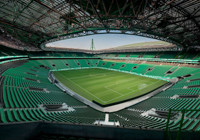
2024 © Fenwick Iribarren Architects 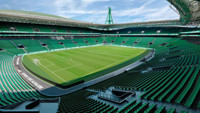
2024 © Fenwick Iribarren Architects 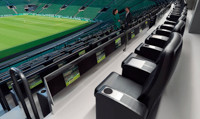
2024 © Fenwick Iribarren Architects 
2024 © Fenwick Iribarren Architects 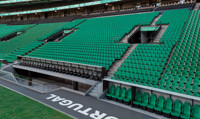
2024 © Fenwick Iribarren Architects 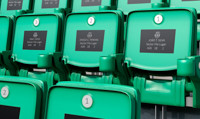
2024 © Fenwick Iribarren Architects 
2024 © Fenwick Iribarren Architects 
2024 © Fenwick Iribarren Architects 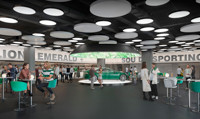
2024 © Fenwick Iribarren Architects

 StadiumDB
StadiumDB